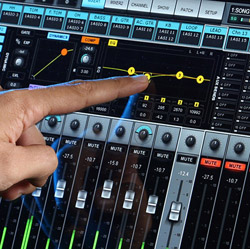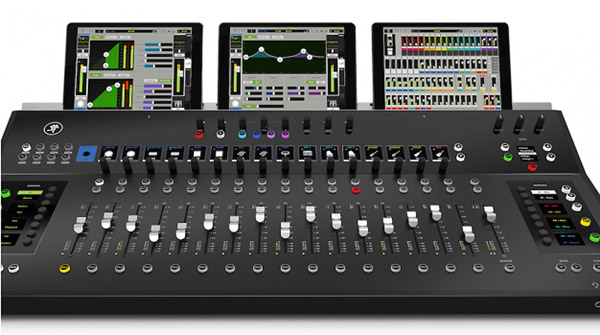
Earlier this year PreSonus released a series of related updates for the StudioLive RM16AI and RM32AI rack-mount digital mixers; StudioLive AI-series consoles; the StudioLive CS18AI control surface; UC Surface touch-control software for Mac, Windows, and iOS; Capture 2 recording software; and Studio One DAW software.
With the updates, two StudioLive RM-series mixers can be cascaded via AVB Ethernet to create larger mixing systems. Both mixers in the expanded systems can be controlled from a StudioLive CS18AI, from UC Surface, and from Studio One Remote. The RM-series update also adds a new Stage Box mode that allows the user to use the mixers as simple I/O devices in conjunction with StudioLive AI-series consoles, in addition to the previously available remote I/O and monitor-mixer mode.
PreSonus simultaneously released Studio One 3.2 that adds the ability to remote-control StudioLive RM-series XMAX preamps from the DAW. Users can also control the hybrid Fat Channel processing for RM-series and AI Series consoles from within Studio One. In addition, the updates also add remote control of Capture live recording software from a CS18AI and from UC Surface.
Yamaha has been quite active, including new firmware update V2.5 for the TF Series. It includes four matrix outputs with delay parameters that are well-suited for setting up delay compensation for live loudspeaker systems in large venues or installations. Users can set delay time in meters, feet or milliseconds. TF V2.5 also includes a simple output delay that can be used as an insert FX on the aux 9/10 or aux 19/20 buses to manage the timing of signals sent to loudspeakers at different locations.
The CL Series also gets an update, V4, that adds numerous upgrades, including new “Precise,” “Aggressive,” and “Smooth” channel EQ algorithms and the new MBC4 multiband compressor Premium Rack device. In addition, V4 allows CL consoles to support control and monitoring of Shure ULXD4D and ULXD4Q digital wireless receivers.
Meanwhile, the MonitorMix iPhone app, which accommodates use of up to 10 devices simultaneously, now supports GEQ gain control from the “Touch And Turn” knobs on the console surface, as well as head amp control of the Tio1608-D I/O rack and more.
Steinberg Nuendo Live DAW software, previously included with the CL Series, is also now being bundled with QL and TF Series consoles, providing multitrack recording and virtual sound check capabilities. And, several new features have been added to StageMix V5.1 for CL, M7CL and LS9 consoles, including 121-band RTA support that expands on the 61-band capability of the current RTA by using the built-in iPad microphone. New aspects of StageMix V5.1 for CL/QL Series only include an improved USB recorder that enables the timeline dot to be dragged to change the playback point, or the desired playback point (time) can be entered numerically.
While technically not a software update, the new Waves Audio eMotion LV1 is a software-based console designed for front of house, monitor and broadcast duties. Based on SoundGrid technology, each of the mixer’s channels has its own plugin rack capable of running up to eight Waves and third-party plugins. All plugin presets and chains saved in eMotion LV1 can be shared with the Waves MultiRack and StudioRack plugin hosts, allowing engineers to move between live and studio environments.
The channel EQ, filters and dynamics processing in the mixer is handled by Waves eMo Q4, F2 and D5 plugins. eMotion LV1 comes in three configurations: 64, 32 or 16 stereo/mono input channels. The mixer can be controlled by hardware control surfaces and multi-touch devices, ranging from four touch screens to a single laptop or tablet.
Recently released Mackie Master Fader v4.0, the control app for the DL32R, DL1608 and DL806 digital mixers, marks the integration of iPad (including the new larger iPad Pro), iPhone and iPod touch support within a single app, doing away with the need for the separate My Fader app for personal monitor mixing.

Master Fader also offers additional new features, including an RTA on each output, built-in oscillator (with a choice of pink noise, white noise or sine wave with selectable frequency), the ability to copy and paste channels and mixes, and a quick assign function. There’s also an updated take on recording and playback.
Meanwhile, Mackie has also introduced the DCi6 control surface for the DL32R. Dubbed the AXIS system, the control surface allows adjustment of every parameter on the mixer, providing full-color channel displays and the ability to dock up to three iPads in the SmartBridge. This provides users with easy customization over each iPad view to meet specific workflow needs.

